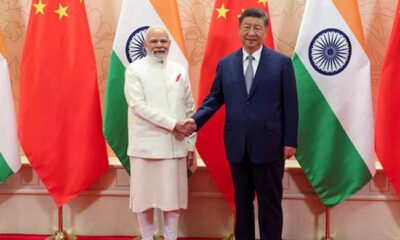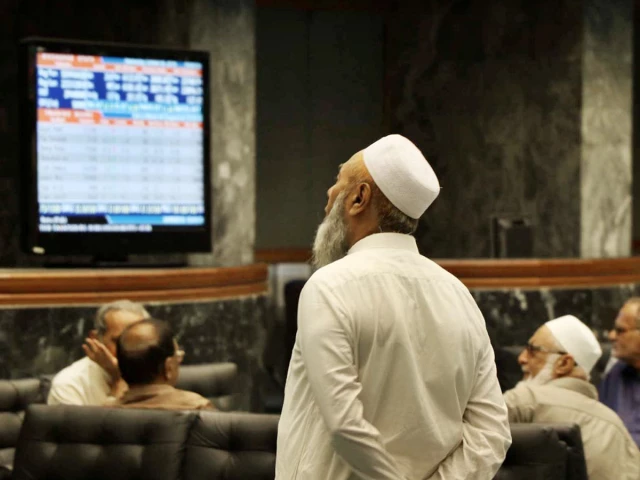Business
Lucid misses Wall Street expectations, narrows production guidance

Brand new Lucid electric cars sit parked in front of a Lucid Studio showroom in San Francisco on May 24, 2024.
Justin Sullivan | Getty Images
DETROIT – Lucid Group missed Wall Street’s expectations for a second consecutive quarter as the all-electric vehicle maker continues to address problems with the launch of its new flagship Gravity SUV.
The company, for a second consecutive quarter, also cut the high end of its annual production guidance to around 18,000 vehicles from a previous forecast of between 18,000 and 20,000 units. Its original target for this year was 20,000 units. It also reduced the low end target of its capital expenditures by $100 million to between $1 billion and $1.2 billion.
Here’s how the company performed in the third quarter, compared with average estimates compiled by LSEG:
- Loss per share: $2.65 adjusted vs. a loss of $2.27 expected
- Revenue: $336.6 million vs. $379.1 million expected
Lucid reported a net loss for the quarter of $978.4 million, or $3.31 per share, compared with a net loss of $992.5 million, or $4.09 per share, in the same period last year. Adjusting for one-time items including restructuring, the company lost $2.65 a share.
The company’s adjusted earnings before interest, taxes, depreciation and amortization was a loss of $717.7 million vs. an expected loss of $597.4 million, according to estimates compiled by StreetAccount. That loss widened year-over-over by 17%. Its quarterly revenue increased roughly 68% from $200 million a year earlier.
Its quarterly revenue increased roughly 68% from $200 million a year earlier.
In addition to releasing its third-quarter results, Lucid said it has agreed to increase a delayed draw term loan credit facility from $750 million to roughly $2 billion from Saudi Arabia’s Public Investment Fund, the company’s largest shareholder.
The company reported total liquidity of $5.5 billion to end the quarter, including the undrawn credit line. Its cash and cash equivalents were roughly flat from the end of last year at $1.6 billion, with a total financial runway into the first half of 2027, the company said.
Lucid also said it continues to evaluate finance and liquidity options outside of the PIF as it launches its Gravity SUV and develops an upcoming midsize vehicle, which isn’t expected to start production until at least late next year.
An autonomous robotaxi from Uber’s partnership with Lucid and autonomous vehicle startup, Nuro.
Courtesy: Nick Twork | Lucid
Regarding Gravity, Lucid interim CEO Marc Winterhoff said the company “remains intensely focused on ramping up production and addressing the significant supply chain disruptions impacting the entire industry.”
During the company’s last quarterly results in August, Winterhoff admitted there were problems with Gravity, saying the company planned to significantly increase production during the second half of the year.
Winterhoff told investors Wednesday that the company continues to believe it can achieve a significant increase in Gravity deliveries during the fourth quarter, despite the supply chain issues and an industrywide slowdown in EV demand.
Lucid CFO Taoufiq Boussaid said Gravity production increased quarter-to-quarter but remains at an unmeaningful level.
The earnings results come roughly a month after Lucid reported third-quarter vehicle deliveries of 4,078 units, which increased from a year earlier but also fell slightly short of Wall Street expectations.
Lucid has made several partnership announcements this year. In July, it signed a $300 million deal with Uber that included the ride-hailing platform acquiring and deploying more than 20,000 Lucid Gravity SUVs over the next six years that will be equipped with autonomous vehicle technology from startup Nuro. More recently, it announced an expanded partnership with Nvidia for autonomous vehicle technologies.
Lucid’s results are in stark contrast to fellow pure EV company Rivian Automotive, which on Tuesday reported third-quarter earnings and revenue that topped Wall Street expectations and drove the stock price up during intraday trading Wednesday.
Shares of Rivian — following near-record gains Wednesday — are up roughly 16% in 2025, while Lucid remains off more than 40%, including a 1-for-10 reverse stock split this summer.
Business
Will Budget 2026 Bring Back Train Ticket Discounts For Senior Citizens?

Last Updated:
As Budget 2026 approaches, elderly passengers are hopeful that a long-withheld relief might finally return.
Stay Ahead, Read Faster
Scan the QR code to download the News18 app and enjoy a seamless news experience anytime, anywhere.


Indian Railways is set to increase train fares from December 26, and this has once again put the spotlight on senior citizens. As Budget 2026 approaches, elderly passengers are hopeful that a long-withheld relief might finally return.
Business
Does Higher Income Guarantee Faster Wealth? Can You Actually Build Money Faster By Moving To UAE? CA Explains Math

New Delhi: For many middle-class families in India, a particular notion crosses their minds every few months. If people who relocate to the UAE earn more money and if location is a key factor in wealth creation. Chartered Accountant and financial advisor Nitin Kaushik recently sparked a detailed discussion on X by breaking down the actual numbers behind this notion. At the core of his post is a compelling idea that wealth is not created by crossing borders but by crossing comfort zones. Kaushik says that no destination creates wealth and only financial behavior does so.
Kaushik explains how residents working in the UAE often highlight two genuine financial advantages. The first is a lower personal income tax which increases take-home pay. In India, a Rs 2 lakh salary taxed locally may leave Rs 1.55 to 1.6 lakh in hand whereas similar earnings abroad may result in nearly complete take-home. This is due to lower personal income tax abroad. The second factor is a larger monthly savings rate. Many people save between Rs 80,000 and Rs 1.5 lakh per month by sharing accommodation and reducing expenditure. “Same markets. Same funds. Different speeds of wealth creation,” Kaushik wrote.
In the following thread, Kaushik explains in detail how geography has little bearing on wealth creation and how savings discipline does all the magic. He claims that while earning Rs 2 to 3 lakh domestically, several professionals save less than Rs 30,000 per month due to lifestyle inflation, large EMIs and premium living costs. Building Rs 1 crore at this pace will take 15 to 18 years even with strong market returns. “The contrast is not country-based and it is cash-flow based,” Kaushik said.
Kaushik claims that increased income does not ensure faster wealth. A Rs 3 lakh earner saving Rs 1 lakh builds wealth more quickly than a Rs 5 lakh earner saving Rs 40,000. What matters is the investable surplus and not the salary figure, he said.
“Is wealth really about where you work – or what you do with what you earn?”
Every few months this thought pops up in thousands of middle-class homes:
“People who go to UAE build money faster_
Is location the secret?”The truth is more layered than that – and it deserves an_ pic.twitter.com/50uByLnd8h
— CA Nitin Kaushik (FCA) | LLB (@Finance_Bareek) December 23, 2025
According to Kaushik, when expenditure is smaller than income then investing happens almost automatically. The same financial outcome can be achieved at home with modest lifestyle control, aggressive monthly SIPs, consistency across market cycles and zero dependency on “windfall thinking”.
Kaushik said that the real wealth calculation does not consider geography. Income minus expenses becomes investable capital and investable capital multiplied by time becomes net worth. “Change any one variable and the future changes,” the CA wrote.
Kaushik said, “Wealth is not built by crossing borders. It is built by crossing comfort zones. Whether earnings come from here, there or anywhere what changes lives is the habit of paying the future first.”
According to Kaushik, moving abroad may increase savings capacity but discipline alone converts earnings into freedom. In Kaushik’s words, “No destination creates wealth. Only financial behavior does.”
Business
Income Tax Refund Delay: I-T Department Sends Bulk Texts, Says Refunds On Hold

Last Updated:
News18
Income Tax Refund 2025: Several taxpayers on the internet have, over the past few day,s alleged that they have received an email and/ or SMS from the Income Tax Department, saying that their ITR refund has been put on hold due to ‘mismatches’ in their ITR filing.
“Processing of the said return was held as it was identified under risk management process on account of certain discrepancies in the claim of refund. An email with details has also been sent to your registered email address,” the message sent to taxpayers typically reads, according to multiple screenshots shared on social media platforms by users.
December 24, 2025, 11:34 IST
Read More
-

 Business1 week ago
Business1 week agoStudying Abroad Is Costly, But Not Impossible: Experts On Smarter Financial Planning
-

 Fashion6 days ago
Fashion6 days agoIndonesia’s thrift surge fuels waste and textile industry woes
-

 Business6 days ago
Business6 days agoBP names new boss as current CEO leaves after less than two years
-

 Sports1 week ago
Sports1 week agoJets defensive lineman rips NFL officials after ejection vs Jaguars
-

 Tech6 days ago
Tech6 days agoT-Mobile Business Internet and Phone Deals
-

 Sports6 days ago
Sports6 days agoPKF summons meeting after Pakistani player represents India in kabaddi tournament
-

 Entertainment1 week ago
Entertainment1 week agoPrince Harry, Meghan Markle’s 2025 Christmas card: A shift in strategy
-

 Entertainment6 days ago
Entertainment6 days agoIndia streamlines visa rules in boost for Chinese professionals















